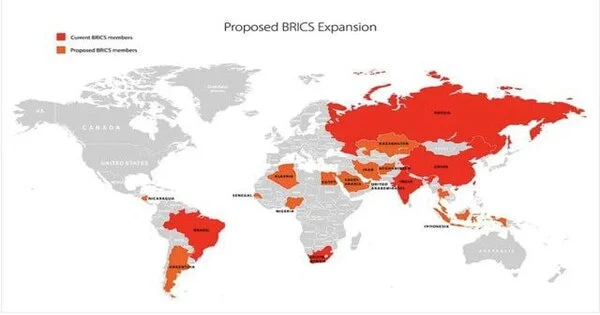The BRICS group of major developing economies has announced the addition of six new members in an effort to restructure the global world order and create a counterweight to the United States and its allies. On Thursday, the five-nation BRICS organization announced membership enlargement, inviting six countries to join the group. Argentina, Egypt, Iran, Ethiopia, Saudi Arabia, and the United Arab Emirates will join the group in January, according to South African President Cyril Ramaphosa, who is hosting the summit in Johannesburg.
BRICS, which had no defined goal and had numerous issues cooperating among itself, have finally begun to recruit. And they’re not done yet. According to South Africa, the 2023 summit’s chair, at than 40 countries want to join the bloc, including freshly recruited members.
The addition of South Africa to the BRICS group was considered as a method to broaden the group’s representation and impact. However, as of my most recent information update in September 2021, no additional expansion had occurred beyond these five member countries. The BRICS states continue to collaborate on a variety of political, economic, and strategic topics, including through yearly summits and numerous working groups, but there has been no official extension of the group to include new countries.
The new organization is difficult to ignore, as its members account for 45% of global oil output and have large iron ore, coal, and bauxite industries, not to mention a key role in global agriculture. As a result, wealthier countries, mainly the G7, rely heavily on commerce with them as well as coordination on topics such as climate change and environmental issues. As a result, “the strongest economies can no longer ignore the needs of the newly-formed bloc,” according to Weafer.
Increasing bilateral trade and finding mechanisms to settle it in bilateral currencies is much more likely. At the moment, this only works with Russia and China, after the central banks of both nations spent years developing a framework to allow it. Recently, Russian President Vladimir Putin stated that 80% of trade between Russia and China is handled in either Russian rubles or Chinese yuan.
According to the expert, while technology, investment, and trade will be important issues on the table, one of the focal points of the discussion between the strongest economies and the BRICS countries could be bridging the gap on their interests in environmental issues and setting priorities.
















